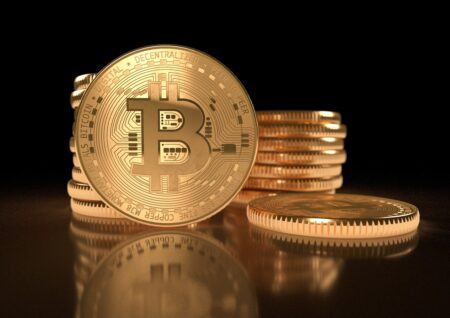In a recent thread on X (formerly known as Twitter), financial commentator James Lavish provided an in-depth explanation of how the Federal Reserve (Fed) “prints money” through a process called Quantitative Easing (QE). This blog post will break down Lavish’s explanation, clarifying the mechanics of QE and its impact on the money supply and economy.
James Lavish, CFA, serves as the co-Managing Partner of the Bitcoin Opportunity Fund, working alongside David Foley. Bringing over a decade of diverse experience in financial management, James formerly held the role of Chief Operating Officer and Risk Manager at LKCM Alternative Management, LLC. During his tenure, he managed a hybrid public and private equity hedge fund unit, focusing on a broad spectrum of industries and company sizes. Before his time at LKCM, James co-founded Ranger Arbitrage, a global risk arbitrage hedge fund, where he also served as a managing partner.
His extensive background in finance includes significant roles such as Head Arbitrage Trader and compliance committee officer at Carlson Capital, a $4 billion global multi-strategy hedge fund, from 1998 to 2003. James’s early career was marked by positions in risk and ADR arbitrage at Citigroup and SG Warburg, starting as a trader on the floor of the NYSE. He is a Yale University alumnus with a BA in Political Science and holds the Chartered Financial Analyst designation.
What is Quantitative Easing (QE)?
Quantitative Easing is a monetary policy tool used by central banks, like the Federal Reserve, to stimulate the economy during times of financial stress. When traditional methods of adjusting interest rates are no longer effective (e.g., when rates are already near zero), the Fed may turn to QE to inject liquidity into the financial system.
How Does QE Work?
As Lavish explains, the process of QE involves several steps:
- The Fed announces its intention to purchase securities (usually U.S. Treasury bonds) and the amount it plans to buy.
- Primary dealers, which are large financial institutions that serve as intermediaries between the Fed and the market, buy these securities on behalf of the Fed.
- Once a purchase is made, the Fed credits the reserve accounts of the primary dealers with newly created money and adds the purchased securities to its own balance sheet.
- This crediting increases the total reserves of these banks, directly injecting liquidity into the banking system.
In essence, the primary dealers act as brokers, settling the trades and sending the newly created money to the sellers of the securities while transferring the securities to the Fed.
The Monopoly Game Analogy
Lavish uses a Monopoly game analogy to illustrate the impact of QE on the money supply. Imagine a game of Monopoly where all the money has already been distributed among the players. Then, a new player joins the game with additional money from another Monopoly set. This new player starts buying properties, effectively expanding the money supply within the game. As a result, the prices of properties like Park Place and Boardwalk increase significantly.
Similarly, when the Fed engages in QE, it adds money to the financial markets that was not there before, injecting liquidity and potentially driving up asset prices.
The Relationship Between QE and the Money Supply
Lavish points out the correlation between the Fed’s balance sheet expansion and the growth of the M2 money supply. M2 is a measure of the money supply that includes cash, checking deposits, and easily convertible near money, such as savings deposits and money market securities. As the Fed purchases more securities through QE, the M2 money supply tends to rise in tandem with the expansion of the Fed’s balance sheet.
Why Not Just Print Money Directly?
Some may wonder why the Fed doesn’t simply print money and skip the complex process of QE and Treasury borrowing. Lavish warns that such an approach would transform the U.S. into a “Banana Republic,” where unchecked money printing to fund government deficits leads to hyperinflation.
In such a scenario, the Treasury (or Congress) would spend as much as they want, and the Fed would print the necessary money to allow for that spending. This would lead to an exponential rise in prices, eroding confidence in the U.S. dollar as a store of value and, eventually, as a means of exchange. Hyperinflation would ensue, causing economic chaos and the collapse of the dollar.
Featured Image via Pixabay









